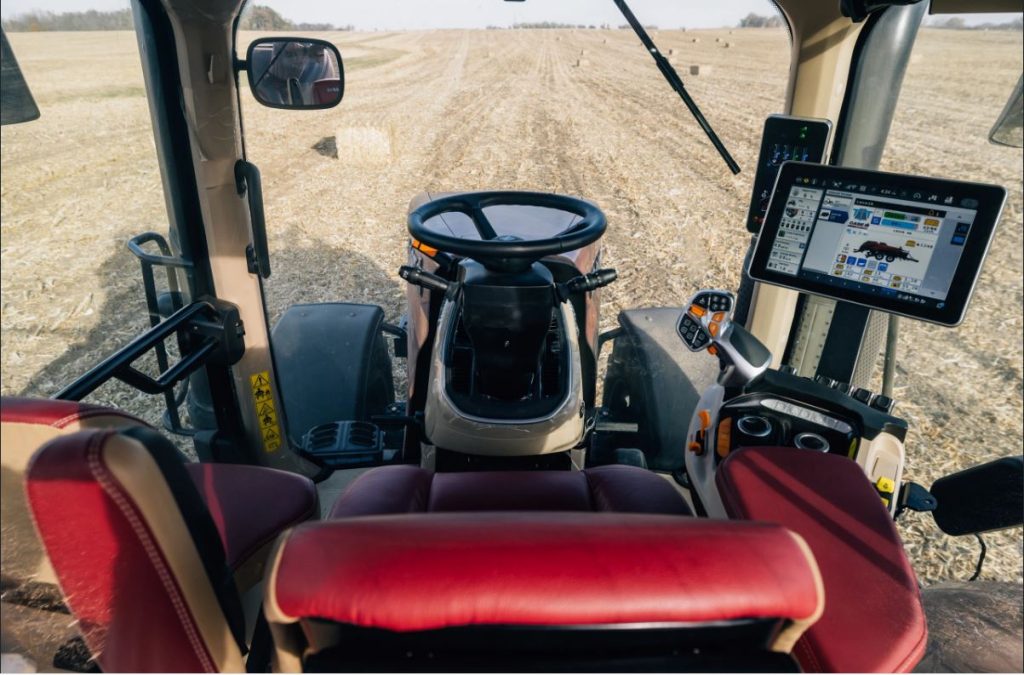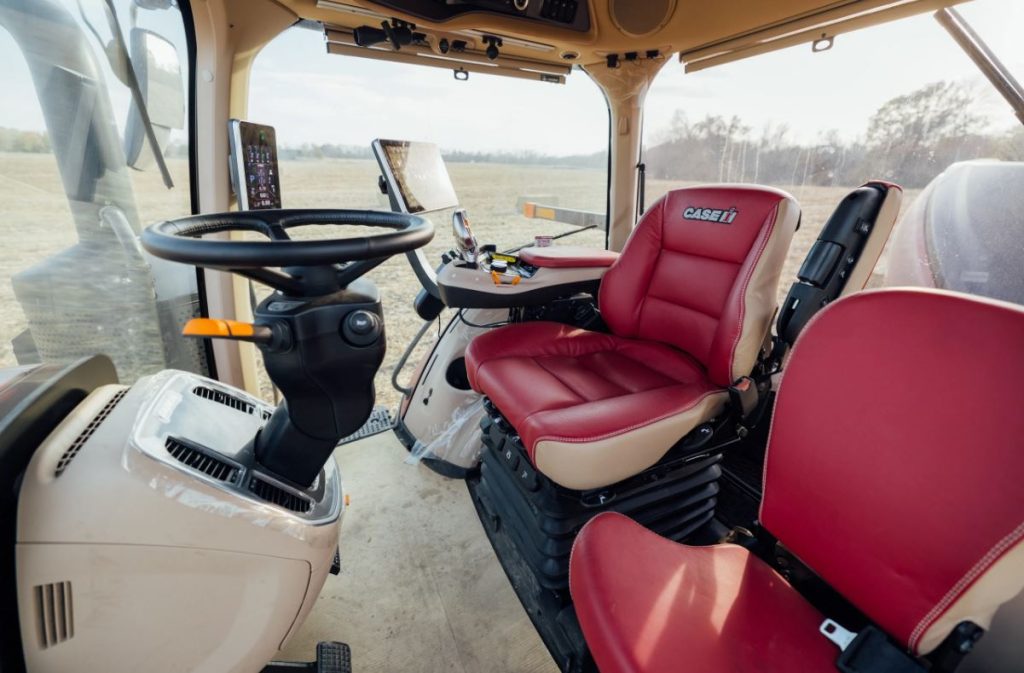Michigan State University (MSU) has long enjoyed an esteemed reputation for its Agriculture and Engineering programs. So, when CNH Industrial, a global leader in agriculture and construction equipment, was looking for partners to help gather intel on the user experience and design of the CIH Magnum tractor line, MSU was high on their list of potential collaborators.
MSU Partners with CNH Industrial to Develop a Human- Centered Tractor Cabin Design
Michigan State University (MSU) has long enjoyed a positive reputation for its Agriculture and Engineering programs. So, when CNH Industrial, a global leader in agriculture and construction equipment, was looking for partners to help gather intel on the user experience and design of the CIH Magnum tractor line, MSU was high on their list of potential collaborators. Citing MSU’s historical experience in agriculture as a Land Grant University as well as its ties to the automotive industry, David Sachtleban, CNH Industrial Customer Experience for AG/CE Seating & Controls said, “MSU has proven itself as an esteemed partner who can provide unmatched commentary and insight that can give CNH Industrial the upper hand in providing the best possible customer journey.”
A history of agricultural and engineering research excellence
Director of Corporate Partnerships at MSU’s Innovation Center Brice Nelson discussed the genesis of the partnership between CNH Industrial and MSU faculty members Dr. Tamara Bush and Dr. Sarah Swierenga. Nelson explained that CNH Industrial’s interest in MSU stems from the university’s substantial overlap in agriculture and mobility engineering work, stating, “Our faculty value corporate partners and projects that impact real-world applications. We have a long history of work in agriculture and engineering as well as a broad faculty base that has a lot to offer.”
Nelson’s primary focus is to create connections between MSU researchers and corporations to establish mutually beneficial collaborations that advance innovation at the university. Nelson expressed that this project is an excellent example of MSU’s strength as a corporate research partner because of the cross- disciplinary opportunities for collaboration. This unique project combines efforts from numerous fields of study on campus, including the MSU farming and agriculture community, MSU College of Engineering, and MSU College of Communication Arts and Sciences.

A cross-discipline partnership
MSU Faculty members, Dr. Tamara Bush and Dr. Sarah Swierenga, exemplify the strengths of a cross-disciplinary approach to problem solving. Dr. Bush’s background in biomedical engineering and work with seat design brings a unique aspect to the table when engaging in this study. As a professor of Mechanical Engineering, Dr. Bush has focused on how devices interface with people and how to use human-centered data to influence design specifications.
Dr. Sarah Swierenga, an MSU Professor of Practice in User Experience, is teaming up with Dr. Bush. Dr. Swierenga has started a Master of Science in User Experience program in the Department of Media and Information, and has worked with numerous companies on User Experience (UX) design challenges. She brings her extensive expertise and a critical eye for user-focused design research to the project.

A human-centered tractor cabin design
After the first round of interviews, Dr. Bush and Dr. Swierenga will identify common themes from the feedback that will influence future design decisions. Based on their initial findings and their experiences in human-centered design, they will then work together to design a model or prototype to present to CNH Industrial. Bush and Swierenga’s goals are to take a critical look at current tractor cabin configurations and find ways to improve the interiors to better address the needs of future users. One such area of focus will be how drivers interface with the many screens and displays in current CIH Magnum Tractor cabs and how they can be made more user-friendly. Likewise, seat design and ergonomics research can also be applied to the cabin where drivers spend many hours working; a comfortable driver’s seat and an intuitive cabin layout could also be incorporated into the next-generation prototype.
After creating a new model, they will go back for the second round of interviews to assess customer satisfaction with the new design. With data from these second- round interviews, the team will continue to evaluate and edit the model.
“Our faculty value corporate partners and projects that impact real-world applications. We have a long history of work in agriculture and engineering as well as a broad faculty base that have a lot to offer.”
– Brice Nelson, Director of Corporate Partnerships at MSU’s Innovation Center
A bright future for a continued partnership
Receiving customer feedback allows CNH Industrial to not only improve its products but also improve customer loyalty to the brand. As CNH Industrial looks ahead to the future of farming and the comfort of future farmers, getting feedback to create a tractor cabin interior designed around the needs of future farmers is vital. Dr. Swierenga expressed how in-depth user experience data can give CNH Industrial that competitive edge they are looking for.
Excited about the project’s future, Sachtleben expressed, “The partnership with MSU and efforts of Dr. Swierenga, Dr. Bush, and the student project team show just how focused CNH Industrial is on putting the customer first and creating a world-class operator experience. By breaking new ground together, we can solve real-world problems and provide additional value to those who feed the world.”
These same methodologies can be applied to the cabin of any vehicle. As society embarks on its mobility revolution, expect to hear of more great work from this team on a variety of vehicle usability design projects.



